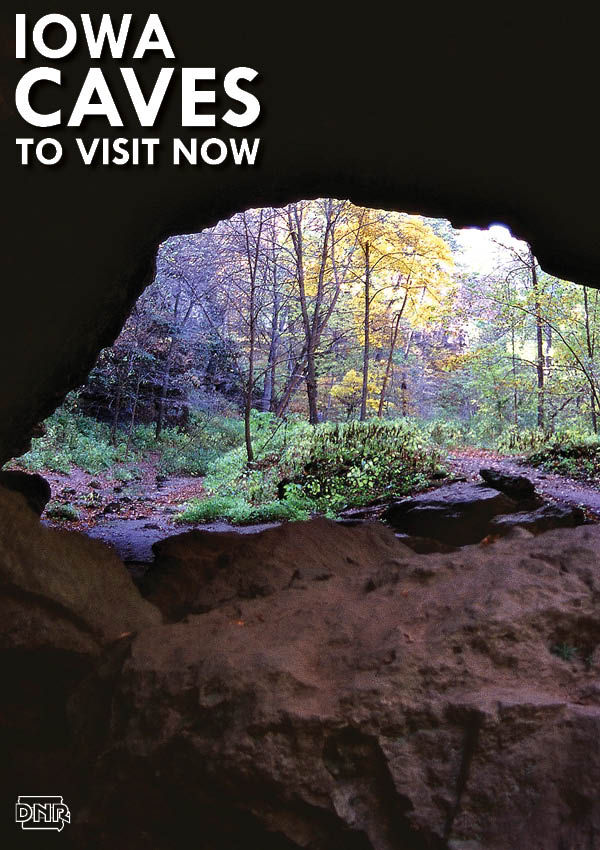You might not expect it, but Iowa has caves of various sizes and shapes on both private and public land. And since some of them can be explored, it’s time to go spelunking! (That’s cave exploring, for those in the know.)
The caves we’ve featured below are particularly notable public locations any spelunker can visit. As with any natural formation, check with site authorities for special regulations, registrations, or visiting hours before your adventure. Some locations have mandatory educational sessions to help visitors prevent spreading the fungus that causes white nose syndrome in bats.

Dance Hall Cave Maquoketa Caves State Park is a great place, as the name suggests, to explore all sorts of caves. Still, Dance Hall Cave is particularly captivating because it’s the largest (1,100 feet!) and most easily accessible in the park. There is dim lighting along the main passage, but if you want to see the rest you’d better bring your own lights and a pair of dry socks. While you’re in the park, see the natural land bridge and the 17-ton balanced rock just off the main road.
Decorah Ice Cave One of the most geologically interesting cave destinations in the state, the Decorah Ice Cave has been a declared state geological state preserve since 1973 and was placed on the National Register of Historical Places in 1978. While it’s not the largest cave, the Ice Cave has the obvious distinctive feature of being full of ice for most of the year. The cave has a fun social history to boot - stories circulate in the area about past Decorah residents using the ice to make ice cream or cool off a contraband six-pack of beer.
Backbone Cave This one’s a crawler! Only 4 feet high, Backbone Cave at Backbone State Park is best for smaller visitors who don’t mind getting dirty. Classic formations like stalactites and stalagmites can be found inside, as well as a flowstone wall and a cavity that emits a sputtering sound similar to holding a seashell to your ear.